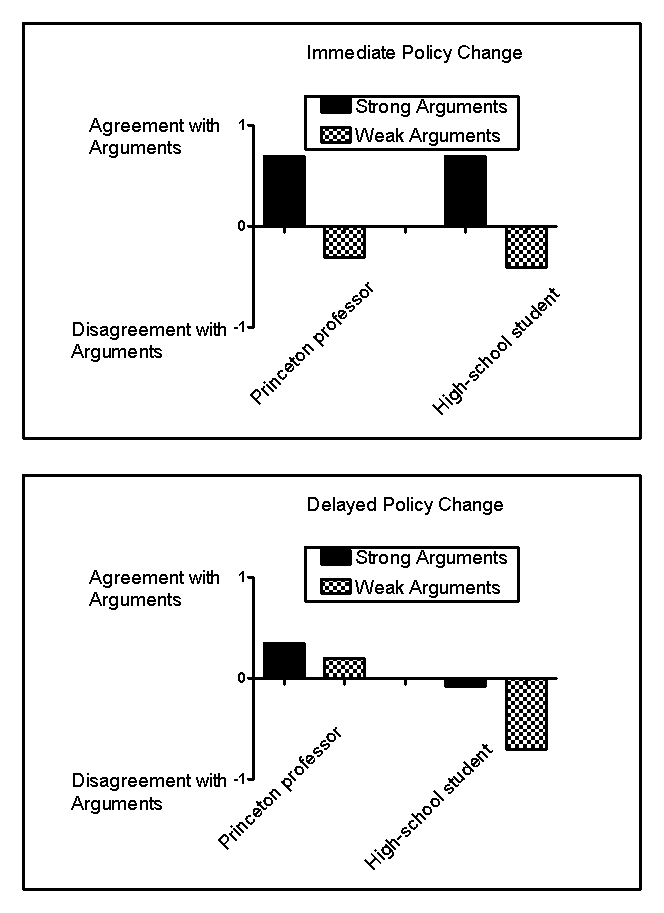Use the following to answer questions
Scenario II
The following scenario contains fabricated results consistent with the following study:
Petty,R.E. ,Cacioppo,J.T. ,& Goldman,R.(1981) .Personal involvement as a determinant of argument-based persuasion.Journal of Personality and Social Psychology,41,847-855.
Every day,consumers are exposed to scientifically based sales,marketing,and public relations strategies designed to influence purchasing decisions,change opinions,or win votes.One common sales strategy is the foot-in-the-door technique,a method that involves first making a smaller request that consumers are likely to grant and then following it with a larger request.Another common strategy is the door-in-the-face technique,which involves making an unreasonably large request that consumers will reject and then following it with a smaller request.When persuasion is necessary,it usually takes one of two forms: heuristic persuasion,which involves an appeal to habits or emotion,and systematic persuasion,which involves an appeal to facts and reason.Often,people will rely more on heuristics-simple shortcuts or "rules of thumb"-to make decisions instead of systematically weighing the evidence.
Petty and colleagues (1981) investigated some of these techniques in college students listening to arguments in favor of their college requiring an institution-level comprehensive final examination for graduation.Some students were led to believe that,if adopted,this policy would take place right away,and some were led to believe that the change would take place in a decade.In addition,some of the students were led to believe that they were listening to an argument from a Princeton professor,and others were led to believe that they were listening to an argument from a high-school student.Finally,some students heard strong arguments in favor of the policy,and some heard weak arguments.Thus,the experiment arranged six groups of students.For example,one group of students heard strong arguments from a high-school student about a far-removed policy change.Figure 13.1 shows fabricated results illustrating the major findings of this experiment.
Figure 13.1 
-(Scenario II) The foot-in-the-door technique works primarily because consumers:
Definitions:
Threat
A potential cause of harm or adverse effect on someone or something, often used in the context of security, business, or environmental issues.
Training Employees
The process of enhancing the skills, knowledge, and competencies of staff within an organization to improve their job performance.
Business Relationship
A connection between two or more entities involved in commercial transactions or partnerships, characterized by mutual goals, communication, and often, contractual agreements.
Funeral Home
A business establishment that provides services related to the burial, cremation, and memorialization of deceased individuals.
Q4: The phase of the general adaptation syndrome
Q9: Among the best predictors of the number
Q61: The personality dimension with the highest heritability
Q86: Directing attention away from our bodies and
Q92: The person who takes credit for his
Q117: The reason why putting a Band-Aid on
Q124: The foot-in-the-door technique works because of:<br>A)reciprocal concessions.<br>B)our
Q161: Which psychological construct does the MMPI-2-RF NOT
Q161: Black and White participants were shown pictures
Q189: Allport believed that traits are preexisting dispositions